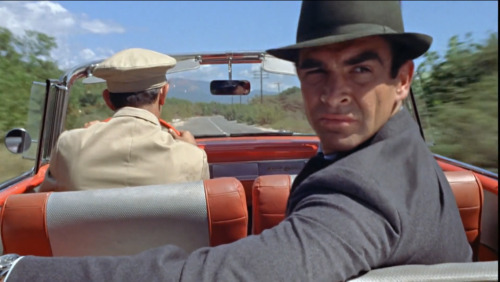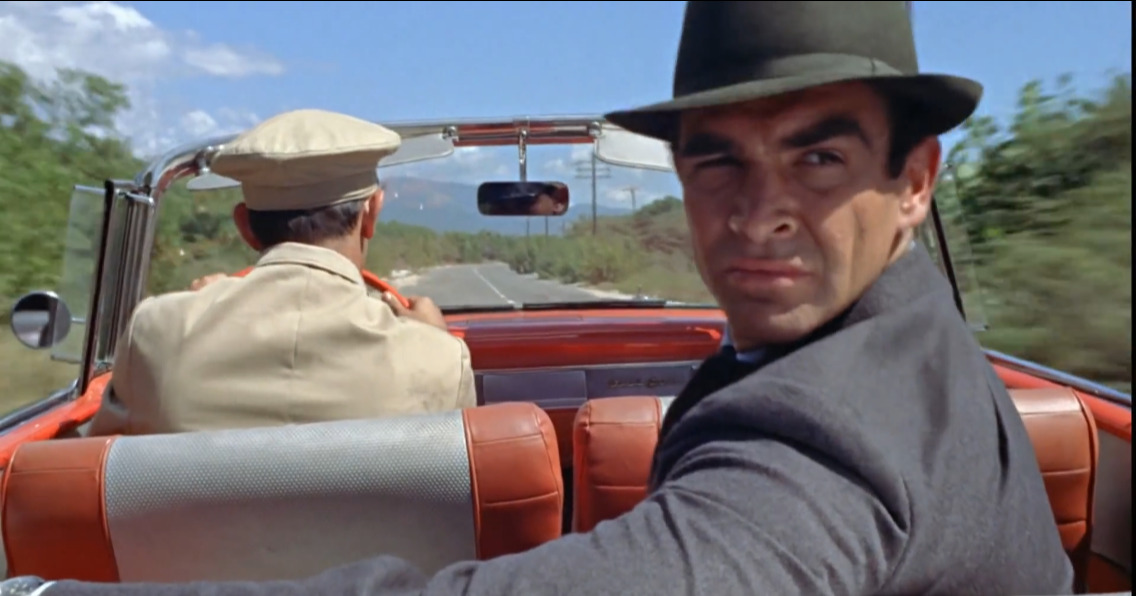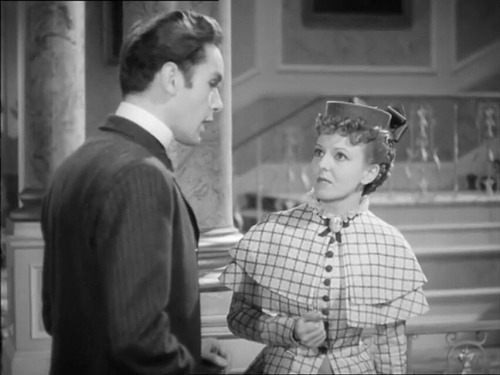
Slob with a blog. Vicariously join me on my movie viewing adventures! Visit my blog here: http://jinglebonesmovietime.blogspot.com
297 posts
TOY STORY 4 (Dir: Josh Cooley, 2019).

TOY STORY 4 (Dir: Josh Cooley, 2019).
Since the first movie was released in 1995, the Toy Story franchise has proven to be one of the most robust, not to mention most lucrative, Hollywood franchises of all time. The original film, a Pixar Animation Studios production released through Walt Disney Pictures, was a massive critical and commercial success, spawning a further two equally successful sequels. After the fairly definitive conclusion of Toy Story 3 (Lee Unkrich, 2010), the prospect of a fourth entry seemed to many unnecessary, albeit not entirely unwelcome.
Toy Story 4 reunites Woody, Buzz, Jessie and the gang and introduces new character Forky. Forky, made by the toys' new owner Bonnie from a plastic spork, pipe-cleaners and other discarded items, is determined to throw himself into the trash where he believes he belongs. Determined not to let this happen, Woody places himself in charge of the spork, a decision which results in the pair becoming separated from Bonnie and their pals. As lost toys they encounter the sinister doll Gabby Gabby and her ventriloquist dummy cohorts and Woody is reunited with old flame Bo Peep.
Happily Toy Story 4 is a sequel which lives up to its mighty predecessors. Director Josh Cooley and screenwriters Stephany Folsom and Andrew Stanton have created a movie that is by turns witty, exciting and ultimately moving. Its message is certainly as poignant as others in the franchise and comes with a climax that that seems pretty darn final.
It goes without saying that the computer generated animation in Disney/Pixar's Toy Story 4 is beautiful. Once again, the vocal performances, notably Tom Hanks as Woody, Tim Allen as Buzz, Annie Potts as Bo and Tony Hale as Forky, are exemplary.
This latest episode of the Toy Story saga thankfully does nothing to tarnish what is arguably the most consistent franchise of them all, while its finale suggests that this really will be the last we see of the gang. If this is the case then more's the pity, although Toy Story 4 definitely provides them with a high on which to go out on.
Read an unedited version of this review on my new blog: jinglebonesmovietime.blogspot.com
-
 infinityopossum liked this · 5 years ago
infinityopossum liked this · 5 years ago -
 ladylayton23 liked this · 6 years ago
ladylayton23 liked this · 6 years ago -
 fangirlspammer liked this · 6 years ago
fangirlspammer liked this · 6 years ago -
 weaverworks liked this · 6 years ago
weaverworks liked this · 6 years ago -
 crimson-mage-02 liked this · 6 years ago
crimson-mage-02 liked this · 6 years ago -
 askwenjing reblogged this · 6 years ago
askwenjing reblogged this · 6 years ago -
 askwenjing liked this · 6 years ago
askwenjing liked this · 6 years ago
More Posts from Jingle-bones

Movie number 74: The Gilded Cage (Dir: John Gilling, 1955).
There are shades of The Maltese Falcon (John Huston, 1941) to this low budget British thriller set in the murky underworld of art forgery.
The film stars Alex Nicol and Michael Alexander as brothers embroiled in murder and an attempted art heist. Punch-ups ensue as the pair endeavour to solve the crime and clear their name.
The Gilded Cage is a decent enough crime thriller from the era of the second feature; solidly, if a mite unimaginatively, directed by John Gilling, who would later direct some noteworthy movies for Hammer Film Productions including Plague of the Zombies (1966) and The Reptile (1966).
With American actors in the lead and a mix of mid-Atlantic accents throughout, presumably in an attempt to appeal to US audiences, its hoped for ‘hard-boiled’ style is a little underdone. It does benefit from use of the actual London locations on which it is set, including Tower Bridge with its pre-Jubilee paint job and a fascinating but all too brief glimpse of St Katherine Docks when it was still a working dock.
The Gilded Cage is no masterpiece but it is a well paced, entertaining flick. Worth a watch, especially for fans of vintage British cinema.
Originally produced by Tempean Films, it would presumably have fallen into obscurity were it not for film archivists Renown Pictures and their dedication to preserving such overlooked works which collectively form an important part of Britain film history.
Read this review and more on my new blog: jinglebonesmovietime.blogspot.com

7 FACES OF DR LAO (Dir: George Pal, 1964).
George Pal first came to prominence in the 1930s with his series of animated Puppetoons shorts. Switching to live action, first as producer and then director he was responsible for a series of special effects heavy sci-fi and fantasy films, including The War of the Worlds (Byron Haskin, 1953) and The Time Machine (Pal, 1960) which are now rightly deemed classics of their genres. His 5th and final feature as directed was 1964’s 7 Faces of Dr Lao, based upon Charles G Finney’s 1935 novel The Circus of Dr Lao.
Tony Randall stars as the titular Lao, an aged (7322 years!) Chinese gent and owner of a fantastical, magical travelling circus. When the circus stops at the dusty Arizona town of Abalone the townsfolk are taught some valuable life lessons from the highly unconventional exhibits include the mythical soothsayer Apollonius, Merlin the Magician, Pan the God of Love and the fabled Gorgon Medusa. All of whom are portrayed by Randall in a truly mesmerising performance. Aided by some outstanding make-up from William Tuttle who rightly won the Academy Award for his efforts.
Some would rightly question the casting of white American Tony Randall as the Chinese Lao. Yet while the performance does exhibit elements of racial stereotyping it is not malicious. Right or wrong, such casting was perfectly acceptable in the era the movie was made and it would be unfair to castigate it for being out of step with more enlightened viewpoints more than 50 years after release.
7 Faces of Dr Lao is an unusual movie; mixing elements of the western genre with gently moralistic Bradbury-esq fantasy, it is probably fair to say it is a little bit of an acquired taste. If you are a fan of Pal then this movie needs no recommendation. For others, a philosophical fantasy aimed at family audiences might be a hard sell. However, it’s status as one of Pal’s lesser known features is entirely unwarranted. The excellent performances, top quality make-up and effects and feverish, almost surrealist atmosphere of the movie make for a heady mix. In my opinion 7 Faces of Dr Lao is one of the finest fantasies ever committed to celluloid.
Visit my blog: JINGLE BONES MOVIE TIME! Link below.

DR NO (Terance Young, 1962).
NOTE: The following is an edited version of a review available in full on my blog JINGLE BONES MOVIE TIME. Check it out! Link below.
The film that launched the longest running franchise in movie history. Sean Connery stars as Ian Fleming’s James Bond 007 in this adaptation of the sixth novel in the series.
Investigating the disappearance of fellow MI6 operatives, Bond heads to Jamaica and is soon on the trail of the titular Dr No, an underground dwelling, Nemo-esq scientific genius with plans to wreck the US space programme. Fist fights, shoot-outs and car chases ensue!
In many respects, Dr No is Bond in its purest form. Before the over reliance on gadgets, before the campy, double entendre laden humour, before the over the top action set pieces. Connery is perfect in the role: suave yet cool, a lover and a fighter. He is surrounded by a classy supporting cast. As Island girl Honey Ryder, Ursula Andress set the standard for Bond girls, emerging like Venus from the ocean in a two-piece swimsuit and creating one of the most iconic images of the entire series. Jack Lord and John Kitzmiller make appealing allies for Bond, while Bernard Lee and Lois Maxwell make their first appearances as Bond’s MI6 boss M and his flirtatious secretary Miss Moneypenny, respectively.
Director Terance Young never lets the pace flag. Dr No is one of the shorter Bonds but Young never wastes a second as he delivers a gripping, intelligent thriller.
Rewatching the movie almost 60 years after release it is fascinating to see how much of what we associate with the series is already present. Refinements were made to the formula over the coming films but I don’t think this series opener was ever bettered. Equalled maybe, but it has a certain economic, raw, unpolished appeal that box office success and bloated budgets would not allow for in the future. Six decades on this is still a fantastic piece of popular cinema. Intelligent in a way action movies rarely are today, shot through with streak of sardonic humour. If you are only familiar with later entries than this original classic should really be next on your Bond viewing list!
100+ movie reviews now available on my blog JINGLE BONES MOVIE TIME. Link below.


Movie number 58: The Long Arm aka The Third Key (Charles Frend, 1956).
The final movie shot at Ealing Studios before production shifted to the MGM British Studios. The Long Arm, retitled The Third Key in the US, stars Jack Hawkins as phlegmatic detective superintendent Tom Halliday, busy pursuing a safecracker while neglecting his family.
Charles Frend directs in a somewhat low-key documentary style which recalls earlier Ealing police drama The Blue Lamp (Basil Dearden, 1950). The attempted realistic portrayal of unglamorous, often mundane police work results in a movie which is less a thriller and more a police procedural drama.
Hawkins is as dependable as ever in the lead and the film benefits from its use of real life locations, in particular an exciting climax at the Royal Festival Hall.
While not quite as satisfying a movie as the classic The Blue Lamp, The Long Arm is still a neat little drama; notable for both its place in British film history and its considerable entertainment value.

YOUNG MAN’S FANCY (Robert Stevenson, 1939).
Young Man’s Fancy is a very early comedy from the Ealing Studios. Released in what was producer Michael Balcon’s second year as studio head, the movie has few of the hallmarks later associated with Ealing.
Griffith Jones stars as aristocrat Lord Albarn who is to be wed to a brewery heiress. Unhappy with the marriage of convenience he rebels, visiting a music hall and falling for human cannonball Ada (Anna Lee).
Ada agrees to help Albarn out of the forthcoming wedding but soon the pair are caught up in the Siege of Paris and the events of the Franco-Prussian War.
Such an odd dramatic turn in an otherwise frothy rom-com is slightly jarring but don’t let that put you off of this surprisingly entertaining movie. Not only are there plenty of laughs but it also has a social conscious rare in 1930s British cinema outside of the Documentary Movement.
The talented Robot Stevenson only directed three films at Ealing before decamping to Hollywood where he gained critical and commercial success with Jane Eyre (1943). Late in his career he worked almost exclusively for Walt Disney Productions where he was responsible for number of excellent family drama and fantasy films including Old Yeller (1957) and Mary Poppins (1964). Young Man’s Fancy is probably the best of Stevenson’s Ealing output, a somewhat frivolous but enjoyable ‘B’ picture from his and the studio’s formative years.
Check out my blog jinglebonesmovietime.blogspot.com for more reviews of vintage Ealing Studios classics!